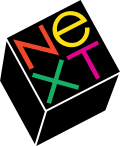External links
- Board President of Music for Minors
- Opera San Jose, Board of Trustees, President
- Merola Opera Program, Board of Directors, Treasurer
Key figures in the history of Apple Inc. | |
|---|---|
| Founders | |
| CEOs |
|
| Current employees | |
| Former employees |
|
| Corporate directors |  | |
|---|---|---|
| Team members | ||
| Hardware products | ||
| Software products | ||
| | This biographical article relating to a computer specialist is a stub. You can help Wikipedia by expanding it. |